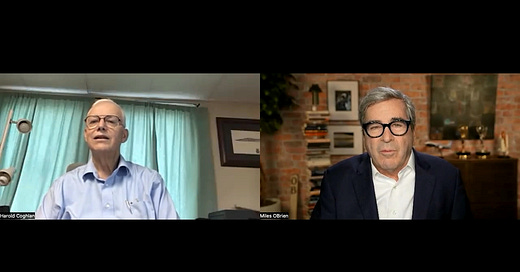On a clear night near Washington Reagan National Airport, an American Airlines CRJ regional jet and a U.S. Army Black Hawk helicopter collided mid-air, sending shockwaves through the aviation community. The accident, occurring in some of the most complex and restricted airspace in the country, has raised serious questions about the safety of military and civilian flight operations in Washington, D.C.
In this special edition of Miles to Go, I sat down with veteran pilot Harold Coghlan, a man with decades of experience flying both military and civilian aircraft, to break down what happened, why it happened, and what needs to change to prevent another catastrophe.
Understanding the D.C. Airspace: A Tight Squeeze
Reagan National Airport sits in a virtual canyon of controlled airspace, surrounded by restricted zones, military bases, and critical infrastructure. To navigate this, airline pilots must undergo special training, and their aircraft must be equipped with precision navigation systems. Meanwhile, military helicopters operate at low altitudes along the Potomac River, using it as a corridor to avoid overflying the city. This means high-speed jets and low-flying helicopters operate in extremely close proximity—often within just a few hundred feet of each other.
The Mission of the ‘White Tops’
The Black Hawk involved in the collision was part of the U.S. military’s VIP transport fleet, known as "White Tops." These helicopters shuttle high-ranking officials—including generals and government leaders—between military bases and key government buildings. As Coghlan points out, this raises an uncomfortable question: is this level of risk necessary for anything short of a presidential transport?
See and Avoid: A Dangerous Assumption
Unlike airliners, military helicopters rely on a "see and avoid" rule, requiring pilots to visually identify and maneuver around incoming traffic. But as Coghlan explains, this method is fraught with challenges, especially at night. Human eyesight is notoriously unreliable in low-light conditions, and city lights can create optical illusions. Even night vision goggles, while helpful, can create their own visual distortions.
Did the Black Hawk Crew Miss the Warning?
Air traffic controllers had advised the helicopter crew to stay clear of the incoming airliner, instructing them to fly behind it. However, evidence suggests the Black Hawk may have mistakenly turned toward the jet instead. Was this a misinterpretation of the advisory, or were the pilots distracted by something else? The cockpit voice and flight data recorders will provide crucial answers.
The Bigger Picture: A Military Safety Crisis
This tragedy highlights a troubling trend: military aviation accidents have spiked in recent years, reaching levels unseen since the Vietnam era. Training hours have been cut, proficiency has suffered, and accident rates have surged. As Coghlan notes, the military’s response has often been little more than mandatory “don’t crash” safety briefings—hardly the rigorous procedural overhaul needed to address systemic issues.
What Needs to Change?
This accident should serve as a watershed moment. The airspace architecture must be reassessed, helicopter routes restructured, and military aviation safety protocols strengthened. Simply put, we cannot afford to wait for another disaster.
For a full breakdown of this collision and what it means for the future of aviation safety, listen to my conversation with Harold Coghlan on this special edition of Miles to Go.
#AviationSafety #MilesToGo #MidAirCollision #WashingtonDC #PilotTalk #Aerospace #BlackHawk #FAA #MilitaryAviation







Share this post